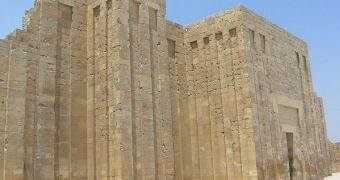Archaeologists working at the ancient Egyptian burial site Saqqara, near the old capital city of Memphis, announce the discovery of the largest tomb at the necropolis. The relic dates back to the 26th Dynasty, and is estimated to be about 2,500 years old, experts who got a chance to look at the monument say. A number of important artifacts have already been discovered inside, including the mummified bodies of a few eagles. This means that the birds belonged to a very important person, most likely a ruler or a high priest, the BBC News reports.
The experts that investigated the site said that the tomb was not sealed after being used for the first time. Rather, over the centuries, it was widely used to entomb various people. Pieces of evidence at the scene seem to indicate that the last individuals to be buried there were put in the ground in Roman times. It was about that time that the burial site was robbed as well, archaeologists believe. Undoubtedly, numerous artifacts and treasures were stolen by grave robbers. Given the large number of people that were laid to rest inside the large tomb, it stands to reason that a lot of objects were placed with them as well, as was the habit at the time.
The tomb was discovered in the area around the entrance at Saqqara, Zahi Hawass, who is Egypt's chief archaeologist, says. He and his team have been excavating at the site for many years, and have discovered numerous monuments, dating back thousands of years. Though many burial structures were found at the necropolis, archaeologists believe that they have only begun to scratch the surface of the history associated with the place. Generally, Hawass said in an interview last year, it was estimated that a very large percentage of Egypt's ancient monuments were still buried under feet of sand and spread across the country.
Inside the newly found tomb, the investigators came across a large hall, carved directly into the limestone that could be found all around Saqqara. Several smaller passageways and other adjacent rooms were also discovered. Numerous coffins, well-sealed pots, skeletons, and ceramic artifacts were also uncovered lying around, and the researchers estimate that they will need a few weeks or months before they will be able to catalog and label all the things they found. They need to estimate the age of individual artifacts, so as to be able to determine when they were entombed, and create a time line for the burial site.

 14 DAY TRIAL //
14 DAY TRIAL //